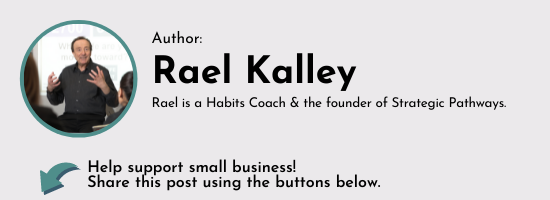One of the services we at Strategic Pathways offer is conducting employee surveys. As I’ve written, ours are different from many typical employee engagement surveys out there.
Organizations use surveys as a means of “taking the temperature” of their culture by creating an opportunity for their staff members to express thoughts, ideas, concerns and suggestions in a forum that is both safe and anonymous.
Anonymity has benefits but also its limitations.
Employee Engagement Surveys Have Limitations
On the one side, it allows participants to freely express their issues and concerns without any fear of retribution or reprisal.
It also allows unsubstantiated accusations, as the accuser will never be known to the accused and never have to repeat those accusations in their presence.
Often the information we gather contains an outpouring of anger at perceived injustices, managers described as brutal, insensitive, uncaring, or tyrannical, and coworkers described as lazy, incompetent or puerile. In other words, emotion reigns, objectivity wanes. And here’s how to fix that.
Survey Says… Good Culture
Of course, I am exaggerating somewhat. Still, we find that very few people dance with joy upon learning that they can participate in a survey.
I once presented the survey findings for staff members in a large department of a high-profile organization in our city.
The work began several weeks ago with a series of staff meetings at which we explained the survey process and distributed questionnaires.
Within a few days, the completed questionnaires began trickling into my office, and I very quickly realized that this was going to be one of the “good” ones.
Many of the questionnaires contained detailed, well-thought-out, articulate answers. The responses were thorough, specific and, most noticeably, not personal.
Completely absent were the vitriol-filled personal attacks that have been the hallmark of so many other surveys I have seen.
It was clear that the employees who chose to participate in this survey did so because they wanted their voices to be heard. Many seemed genuinely concerned for and committed to making their organization as good as it could be. They were willing to believe that their managers’ motives for commissioning this survey were to make things better, not simply undertake another “feel good” exercise.
Positive Doesn’t Mean Perfect
They didn’t all go easy on the organization. They were blunt in their findings, harsh in their criticism and very direct in expressing their opinions around holding their management accountable. At the same time, their critiques were never personal.
This is the hope of any organization that issues one of these surveys. They want to get helpful feedback and essential information from their employees that they might otherwise miss.
(Click to Tweet)
When I presented the survey results to five senior leaders in this organization, I realized why the results were so exceptionally useful.
The leadership team listened. They asked questions. They openly voiced their concerns about many of the issues. They acknowledged their shortcomings. They discussed solutions. They didn’t deny any of the topics of concern.
I left the meeting with a strong feeling that while the company has some work ahead to bring about some of the changes discussed, they were already on track to achieving the improvements. That’s because people on all sides are willing to come together, air their differences, find common ground and implement changes and modifications that will propel this group forward.
We have spent much time on these pages discussing the notion that we only ever do one thing. We do what’s important to us at the moment.
All sides in this department exemplified that belief.
Try it Yourself
Their willingness to share their concerns objectively and evaluate these concerns with the same level of objectivity shows this company believes it is far more essential to make things better than it is to be right.
Before you issue a survey of your own team, consider whether the mindset of your leaders will allow real change to take place.
Till we read again.


